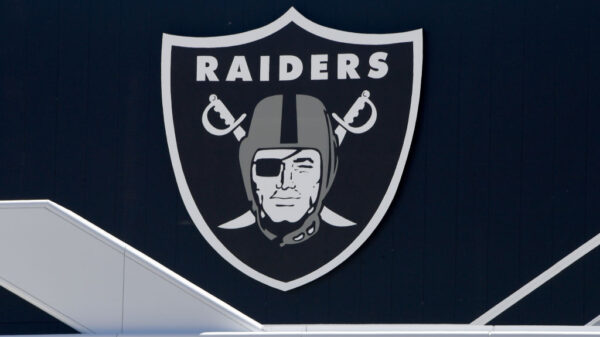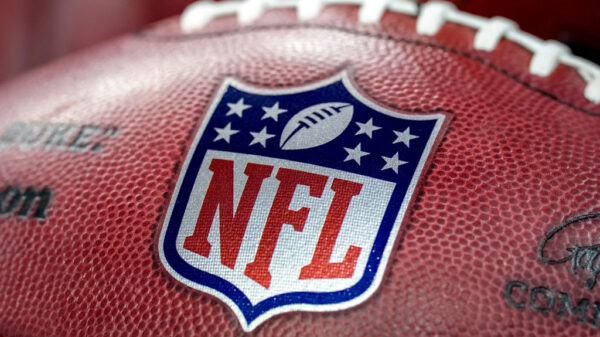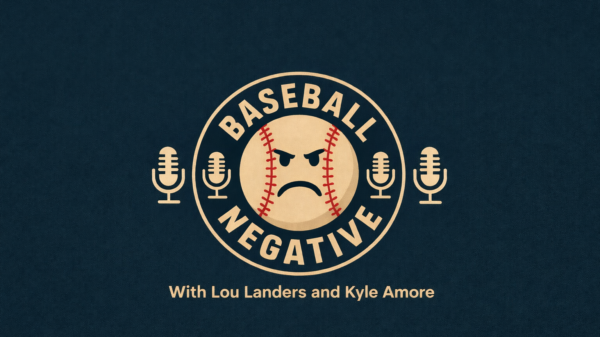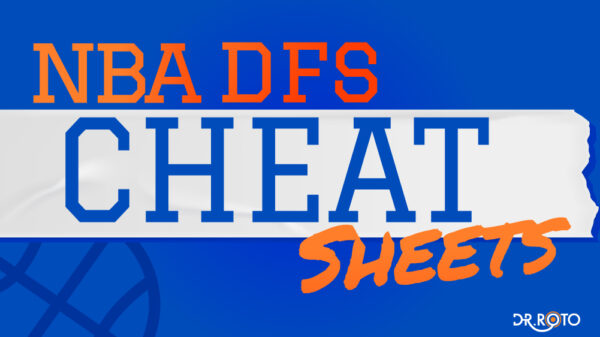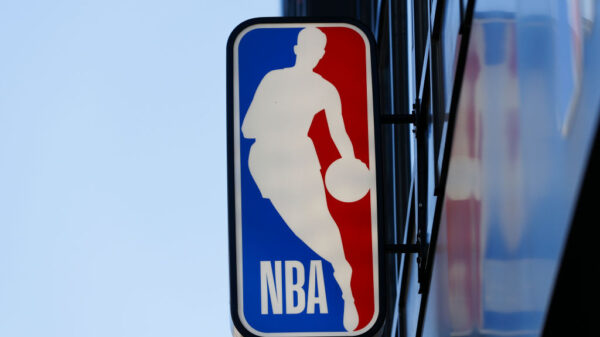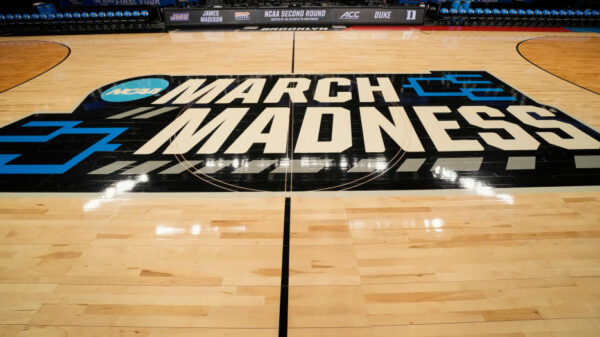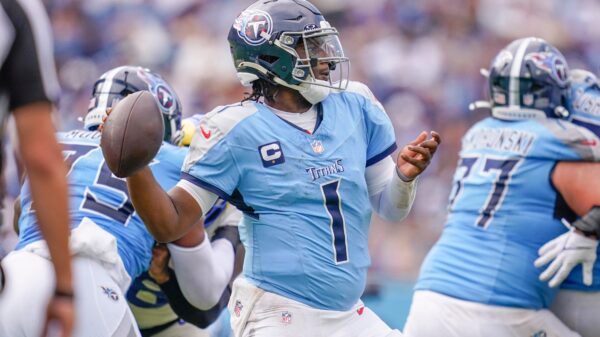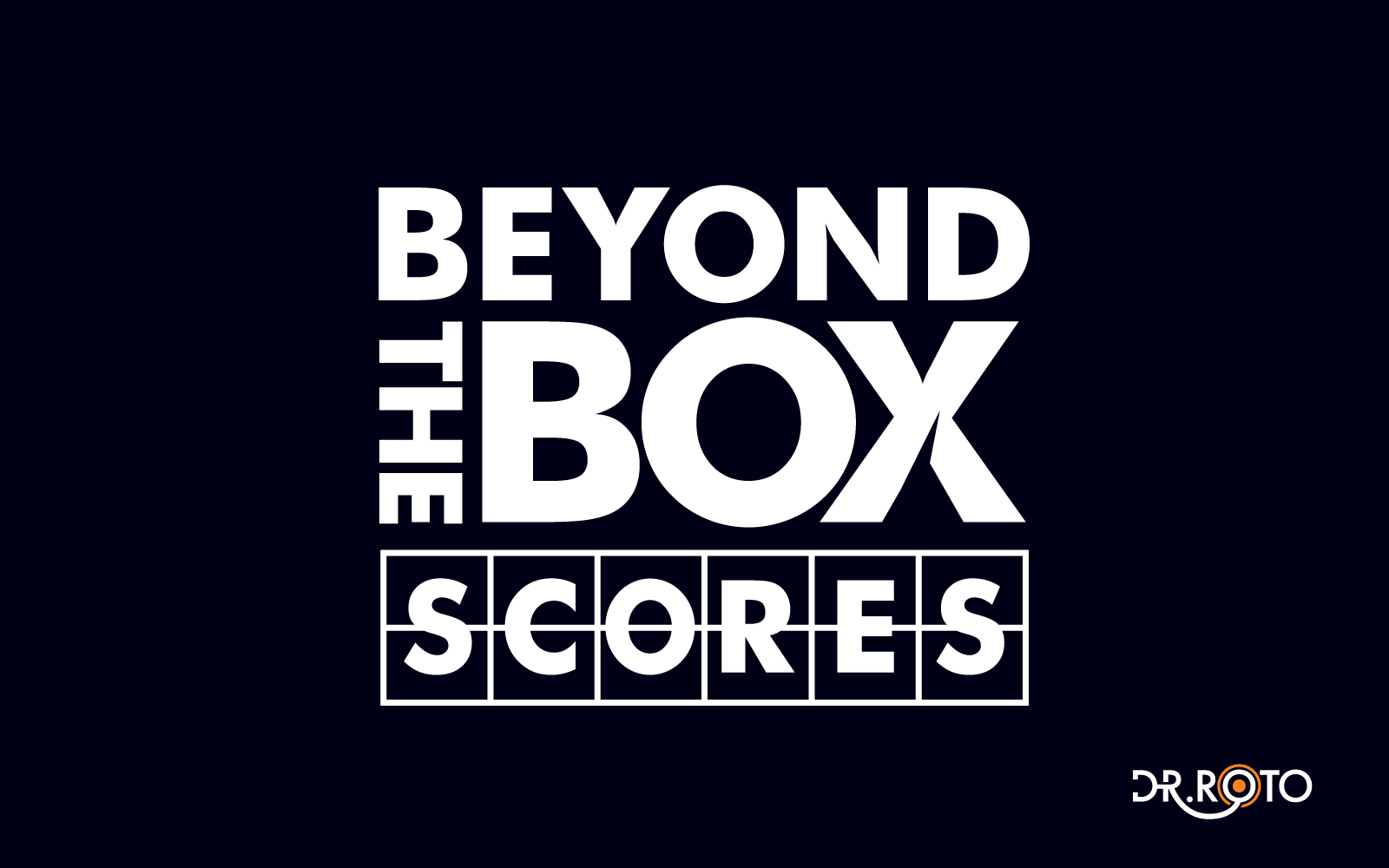Welcome back to the world of fantasy football Beyond the Box Scores. In case you missed it, Tuesday’s edition featuring the Ravens had me questioning two things: my own decision to cover all players below ADP 200, and the fantasy community’s decision to draft Isiah Likely as a top-24 tight end. Luckily, the Bills don’t have as many players on the fringe of relevancy as their AFC rivals did … although they do have their own severely overvalued young tight end. Let’s get right into looking back at the most important stats and narratives from their 2023 season.
Ground Rules: Check out the first edition here for a full explanation of what’s going on. All scoring is Half-PPR, Week 18 stats are not included (so a full season is 16 games), and only players currently being drafted in the top 200 of Underdog Best Ball drafts are covered.
Quarterback
Josh Allen
The Box Scores
- Total Points: 385.6; QB1
- Games Played: 16
- Points Per Game: 24.1; QB1
Beyond The Box Scores
- Full Games Played: 16
- Points Per Full Game: 24.1; QB1
I only gave Josh Allen one blurb to himself in the in-season version of this column: After Week 5, I noted that he was racking up rushing touchdowns despite seeing far fewer designed rushes than he had in previous years, so perhaps he would slow down slightly from his hot start. And I was kind of right: Allen averaged fewer points per game in Weeks 5-10 (22.5) than he did in Weeks 1-5 (24.7). But after Week 10, the Bills fired Offensive Coordinator Ken Dorsey, and Allen’s designed rushing usage tripled under Dorsey’s replacement, Joe Brady, from two attempts per game to six attempts per game. Don’t get me wrong, designed rushing attempts are not the sole determiner of Allen’s fantasy production … but I don’t think it’s a coincidence that it jumped back up as well, to an incredible 25.0 points per game under Brady in the regular season.
Takeaway
At the end of the day, this is all more or less irrelevant. Allen was the QB1 in Weeks 1-10 under Dorsey, and then he was the QB1 in Weeks 11-18 under Brady. He was also the QB1 in 2020 and 2021. In 2022, he had a down year, finishing as just the QB2. He is currently far and away the QB1 in 2024 ADP, going more than a round before Jalen Hurts. The decision to take Allen in a draft is more of a decision about roster construction than it is about choosing him over other quarterback options. For my money, his current 20th overall ADP is a bit too steep a price to pay in most formats … but in smaller leagues (where depth at other positions is easier to find), it’s hard to turn down the edge those 25 points a game he scored under Brady could provide, as no other QB averaged even 22 fantasy points in 2023.
Running Back
James Cook
The Box Scores
- Total Points: 204; RB10
- Games Played: 16
- Points Per Game: 12.8; RB17
Beyond The Box Scores
- Full Games Played: 16
- Points Per Full Game: 12.8; RB17
James Cook’s sophomore season was very solid from a fantasy perspective, but I can’t help but feel a little underwhelmed. The biggest issue with Cook’s fantasy profile is a lack of goal-line work. He was explosive (second in the league in carries of over 10 yards), had okay utilization in the passing game (3.26 targets per game), and racked up the fifth-most carries in the league. But of his 237 rush attempts, only five came within the opponent’s five-yard line … and he only converted one of those five, so I can’t see the Bills rushing to give him more goal-line touches. It’s also worth noting that, given he played all 17 games, Cook’s 62% RB rush share (16th in the league) isn’t particularly impressive, nor is his 10% target share (18th among RBs). In his defense, his target share did get slightly better after the Bills’ OC change (12% in Weeks 11-18), but his rush share declined correspondingly.
Takeaway
Even in a running back market absolutely loaded with question marks, I am struggling to get on board with Cook’s current RB11 ADP. Cook’s rush share, target share, and even straight-up points per game numbers all paint him as more of a mid-range RB2 than an RB1. You could argue that being on an elite offense will allow him to make up for mediocre volume … but the biggest benefit of being on an elite offense is higher TD potential, which is more than offset by Cook’s very low goal-line equity.
Wide Receiver
Stefon Diggs
The Box Scores
- Total Points: 208.1; WR11
- Games Played: 16
- Points Per Game: 13.0; WR15
Beyond The Box Scores
- Full Games Played: 16
- Points Per Full Game: 13.0; WR15
If we’re talking about narratives from Stefon Diggs’ 2023 season, the obvious place to start is his dropoff as the season went on. After nine weeks, Diggs was the WR3, averaging 17.8 points per game. In Weeks 10-17, he was the WR55 on just 6.8 points per game. Looking at it another way, Diggs had double-digit Half-PPR points in every single one of his first nine games, and then he had fewer than 6.9 points in every remaining game but one. However, this is kind of an arbitrary split, unless we believe Diggs simply lost all of his talent upon entering the month of his 30th birthday.
If we’re looking for a less arbitrary split, we can compare Diggs’ numbers before and after the Bills switched offensive coordinators; maybe his decline in production was because Joe Brady’s offense focused less on funneling targets to the WR1. On some level, that may be true: Diggs averaged just an 87% route participation rate under Brady (playoffs included), compared to 94% under Dorsey. He also saw a lower target share (29% vs. 31%) and fewer deep targets (9.99 ADOT vs. 11.02). But a 29% target share is still elite, leaving him tied for fifth among all wide receivers. Just a 2% drop in target share certainly can’t take all the blame for his insane 11-point drop in fantasy production.
When the numbers don’t make sense, I like to look at a player’s PFF grade to see if there was some drop in their subjective performance that can explain things. In Diggs’ case, that does seem to be the case. He had just a 65.6 receiving grade beginning in Week 10 (tied for 58th among qualified WRs), compared to 86.5 in Weeks 1-9 (tied for ninth). The only possible conclusion is that the former All-Pro was visited by the Monstars in early November. Maybe we can blame the back injury that landed him on the injury report around that time, but I’m grasping at straws here.
Takeaway
I’m tempted to ignore all of the bad vibes surrounding the end of Diggs’ 2023 season and be in on him for 2024. After all, he’s still in the same great situation where we saw him produce top-three numbers for the first nine weeks of last season. And even when things got bad, he still maintained that juicy 29% target share. On the other hand, his current ADP of WR16 and 25th overall isn’t exactly a bargain price, and hoping for a bounceback from older players who have started to show signs of decline is usually a losing bet. I think Diggs is a high-ceiling, low-floor play at the end of the second round, and I’ll probably usually pass on him for players who aren’t trending in the wrong direction.
For an update on outlooks for Diggs and the rest of the Bills’ weapons following his trade to the Texans, click here.
Khalil Shakir
The Box Scores
- Total Points: 80.1; WR66
- Games Played: 16
- Points Per Game: 5.3; WR75
Beyond The Box Scores
- Games Played Over 50% Snaps: 8
- Points Per Game Over 50% Snaps: 7.8; WR53
I paid more attention than most to Khalil Shakir during the 2023 season, featuring him five different times in various prop-betting articles. I took his yardage over three times and his under two times, and I’m proud to say that four of five picks were hits, with the lone miss coming on a Week 10 over. The reason I so consistently targeted Shakir’s props is that his role changed dramatically throughout the season. The second-year WR started the season playing just a handful of snaps per game, but he was upgraded to a much larger role following Dawson Knox’s Week 7 injury. His role shrank again following Knox’s return, but it climbed back up to see him post at least a 70% route participation rate in the Bills’ final four games (playoffs included).
In terms of what he did when he was on the field, Shakir’s season was very impressive … with some caveats. According to SumerSports, his 3.16 Adjusted Yards Per Route Run (which accounts for how many receivers a player is competing with on their routes) ranked 17th-best out of 120 wide receivers. However, this is because Shakir almost only saw the field in three-WR sets, running 76.8% of his routes out of the slot, the fourth-highest rate among WRs with at least 40 targets. And Shakir was notably less effective when he did leave the slot, averaging a putrid 0.64 yards on his 91 routes run from anywhere else.
Takeaway
Poetically, Shakir’s current ADP is WR53, exactly where he ranked in points per game if you only consider games where he played over 50% of the Bills’ offensive snaps. I do think he will reach that 50% mark in the majority of the Bills’ games next year, so he could easily outperform that slot. With that said, I don’t think I’ll be taking much of Shakir in most formats. In the later rounds, I’d much rather shoot for upside than floor, and as a slot-only WR who has proven to be ineffective when not in the slot, I’m not really seeing much upside with Shakir. With Diggs, Knox, Cook, Dalton Kincaid, and almost certainly a new receiver to replace Gabe Davis as Buffalo’s outside WR2 (because, again, Shakir has yet to produce outside of the slot) all competing for targets, he will be very hard-pressed to maintain a high enough target share to ever be more than a flex fill-in.
Gabe Davis
The Box Scores
- Total Points: 138.9; WR37
- Games Played: 16
- Points Per Game: 8.7; WR48
Beyond The Box Scores
- Full Games Played: 16
- Points Per Full Game: 8.7; WR48
Gabe Davis’ 2023 season was the definition of boom-or-bust. He had eight weeks outside the top 60 wide receivers, including three complete donuts, but also six weeks inside the top 16 WRs, including three top-10 outings. This is unsurprising given his usage profile: Davis averaged just 4.75 targets a game, 64th in the league, but his 15.6 ADOT was the highest of any player with as many targets as his 78.
Takeaway
Davis is a free agent heading into 2024, and he seems likely to end up somewhere other than Buffalo. Getting out of the shadow of a target hog like Diggs could be good for Davis, who is still only 24 years old. On the other hand, it’s hard to imagine a better fit for his deep-threat skillset than playing with Josh Allen, and he isn’t the caliber of talent to walk into a WR1 job. However, all that and more seems to be priced into his WR62 ADP. Especially in Best Ball, I’ll happily draft Davis at that spot, even with uncertainty around his next team — whoever signs him will have to plan on using him. In Redraft, I’m less interested, but I still don’t hate throwing a dart at Davis as someone you can plug into your flex spot in deep leagues and hope scores a big touchdown.
For an updated take on Davis following his singing with the Jaguars, click here.
Tight End
Dalton Kincaid
The Box Scores
- Total Points: 101.9; TE15
- Games Played: 15
- Points Per Game: 6.8; TE16
Beyond The Box Scores
- Games After Dawson Knox’s Injury: 9
- Points Per Full Game: 7.8; TE13
I could have been either harsher or more generous to Kincaid with his Beyond the Box Scores split. I considered not giving him a special split at all — after all, Knox will still be on the Bills’ roster in 2024, so focusing on games where he was injured is kind of irrelevant unless we expect him to get hurt again. I also considered highlighting only the five games where Knox was actually out, in which Kincaid averaged 10.7 points per game. But this seems like a fair middle ground, essentially cutting out the first seven games of Kincaid’s rookie season, when he was still establishing himself in the Bills’ offense.
This is all to say that there are a lot of ways to look at Kincaid’s rookie season. On the one hand, he lined up outside or in the slot the fourth-most among tight ends, was only asked to pass-block six times all season, and posted a solid 70.5 PFF Receiving grade. On the other hand, he never eclipsed an 80% snap share or an 86% route participation rate with Knox healthy. Even worse, looking at the Bills’ final six games, playoffs included, his averages in those two metrics were just 53% and 69%.
Takeaway
I don’t see any way in which Kincaid is not ridiculously overvalued at TE5 in current Underdog ADP. Yes, there are whispers that he will be more involved in the Bills’ offense next year. But as of the last time we saw them on the field, the Bills clearly didn’t trust Kincaid enough as a blocker to play him in anything close to an every-down role. I think Kincaid would fit better next to Kyle Pitts (ADP TE10) in an “athletic and talented young receiving tight ends with questions about their roles” tier than he does above guys like George Kittle and Evan Engram with proven histories of production … and I’d take Pitts (who is a full year younger!!) over him too.

